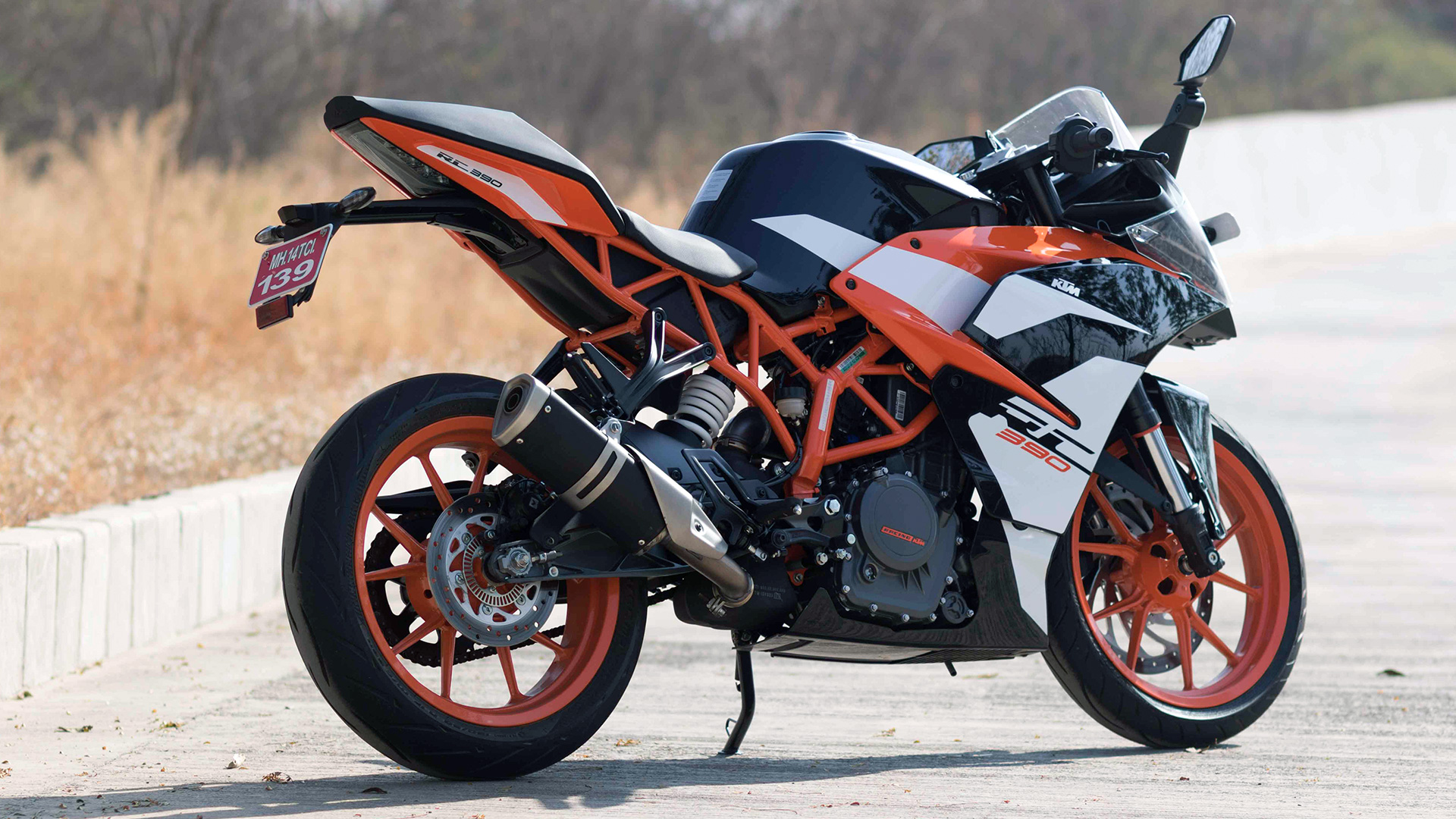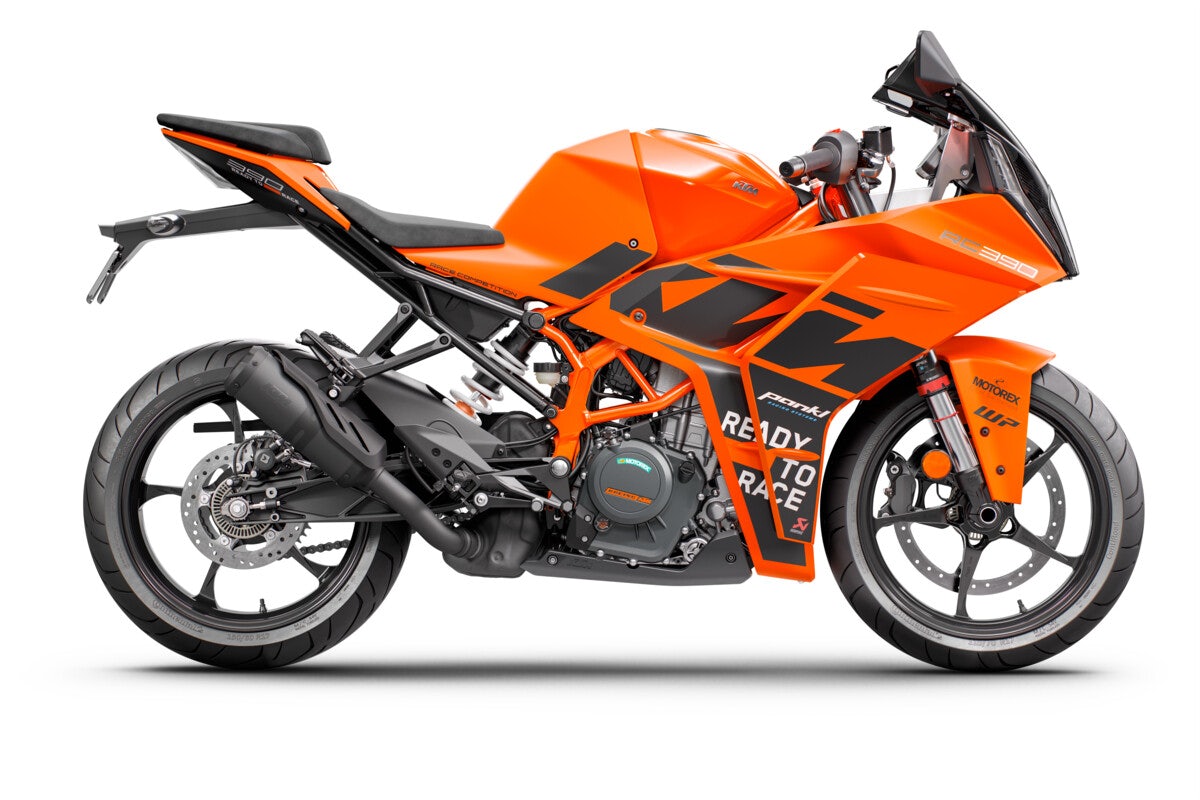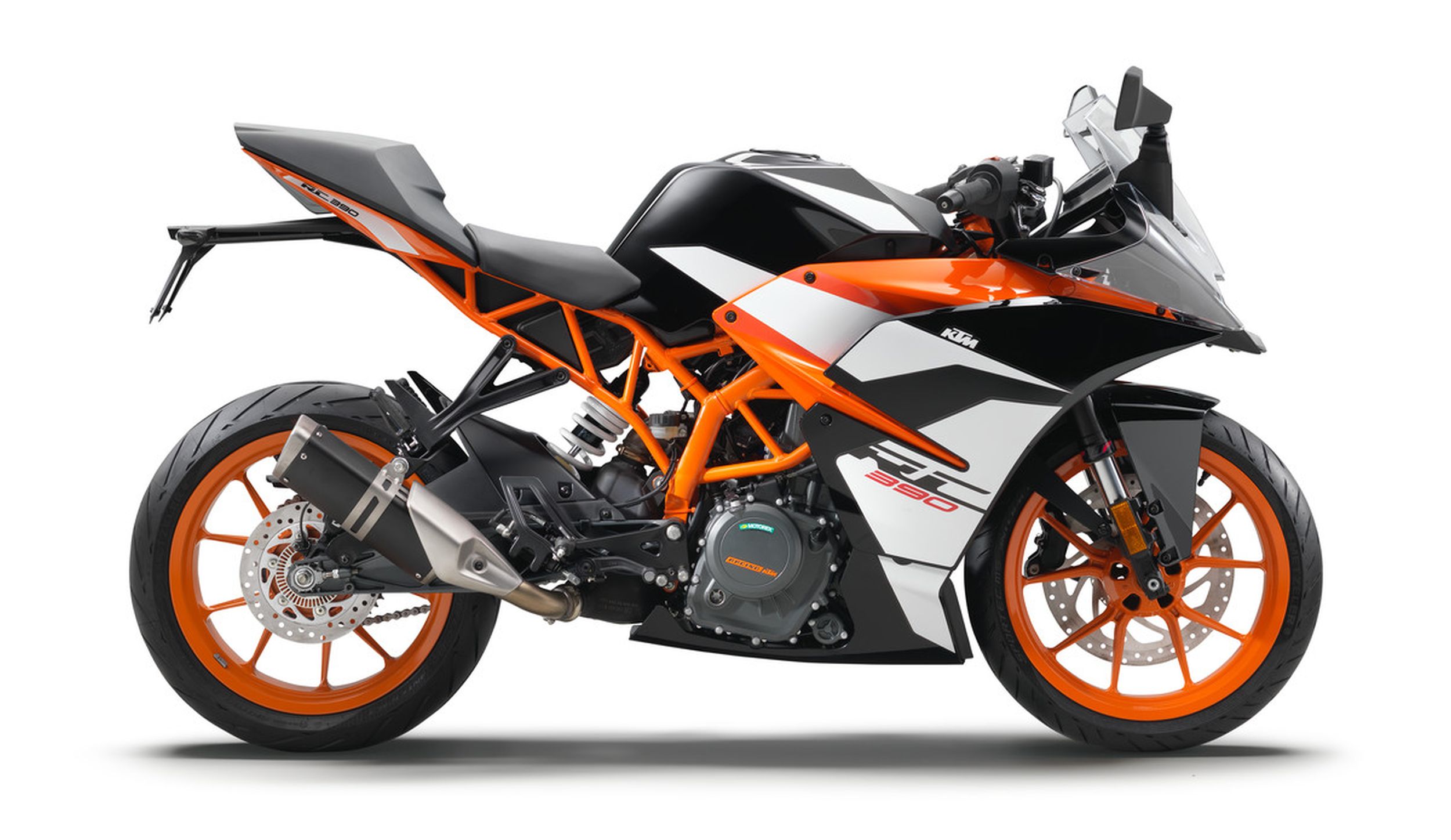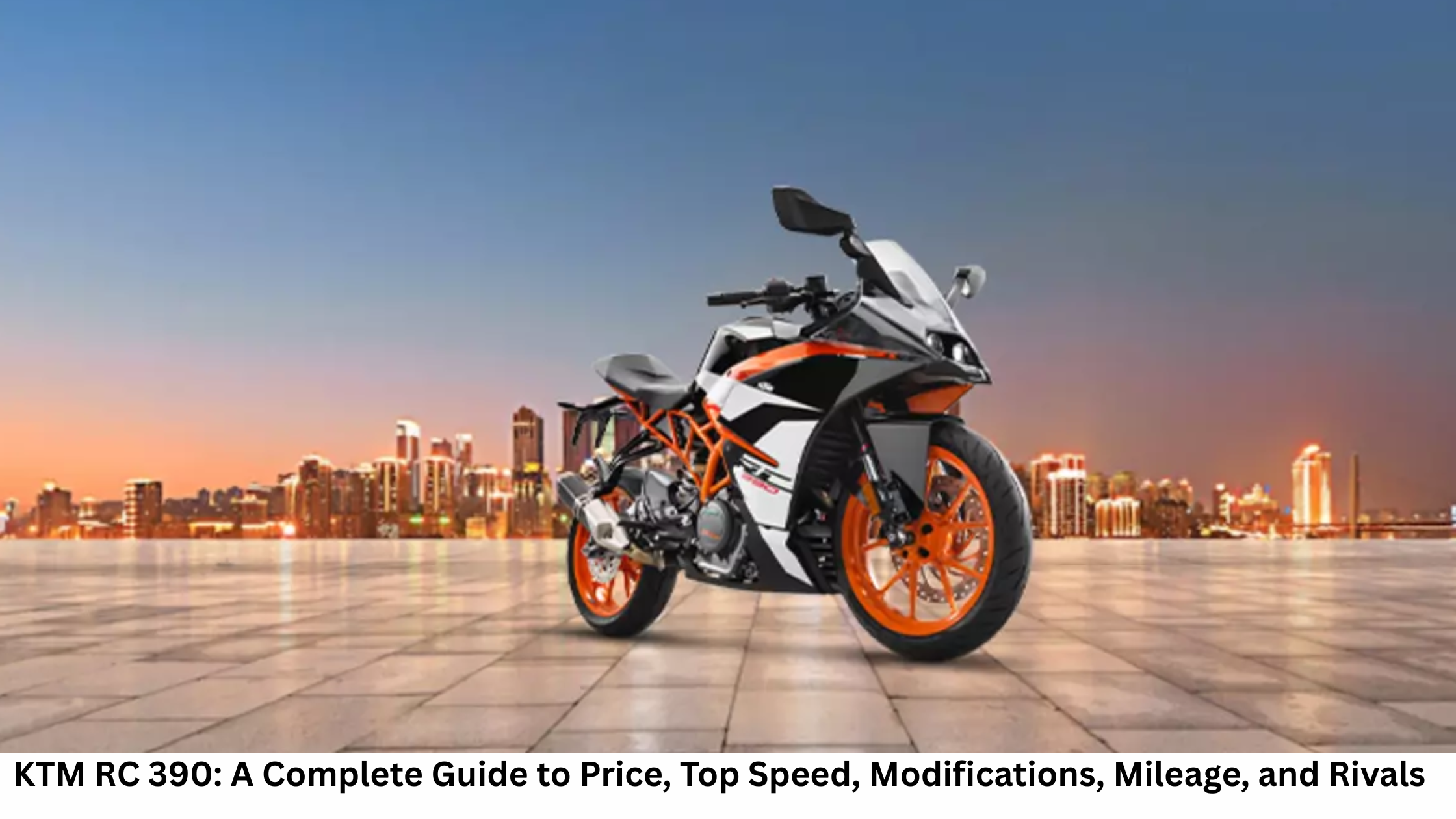The KTM RC 390 is a performance-focused sportbike that sits in the 300–400cc segment and has earned a loyal fan base for its speed, agility, and aggressive styling. Built with race DNA, this motorcycle is a favorite among young riders, track enthusiasts, and those who want a thrilling ride on everyday roads.
In this detailed guide, we’ll explore the KTM RC 390’s pricing, speed, possible modifications, fuel efficiency, and how it compares to competitors.
Why the KTM RC 390 Stands Out

KTM designed the RC 390 for people who love track-ready machines but still want something street-legal. It brings together sporty looks, top-tier components, and advanced technology. Whether you’re riding on twisty roads or racing on the track, the RC 390 responds quickly and handles sharply.
Some of its most impressive features include:
- A 373.2cc liquid-cooled engine
- Full-color TFT display
- Adjustable WP Apex suspension
- Lightweight steel trellis frame
- Dual-channel ABS with Supermoto mode
KTM RC 390 Price Details

The RC 390 is considered a premium motorcycle in its category. Its pricing depends on the location, local taxes, and accessories.
| Region | Price Range |
| Ex-showroom (India) | ₹3.10 lakh – ₹3.20 lakh |
| On-road (India) | ₹3.50 lakh – ₹3.80 lakh |
| International Market | $5,500 – $6,500 (approx.) |
Though more expensive than some rivals, the features and build quality justify the cost. For someone seeking performance and design, it offers great value.
Top Speed and Engine Performance

The KTM RC 390 is known for its power-packed performance and aerodynamic styling. It features a 373.2cc single-cylinder engine that generates 43.5 PS of peak power and 36 Nm of torque. Paired with a 6-speed gearbox and slipper clutch, it accelerates quickly and smoothly.
| Specification | Value |
| Engine Capacity | 373.2cc, single-cylinder |
| Max Power | 43.5 PS |
| Max Torque | 36 Nm |
| Top Speed (Stock) | 170–175 km/h |
| Top Speed (Modified) | 180+ km/h |
| 0–100 km/h Acceleration | 5 – 6 seconds |
| Gearbox | 6-speed with slipper clutch |
Its aggressive riding position and sharp fairing give it better stability at high speeds.
Custom Modifications: Performance & Style

Owners often modify their RC 390 for better performance or to express their personal style. Let’s break these into two main areas:
Performance Upgrades
- Aftermarket Exhaust Systems: Improve sound and throttle response.
- ECU Remap: Optimizes engine power output.
- K&N Air Filter: Improves airflow, aiding smoother combustion.
- Adjustable Suspension: Provides better control over ride quality.
- Lightweight Alloy Wheels: Reduces rotational mass for improved handling.
Aesthetic Modifications
- Custom Paint and Wraps: Matte black, race-inspired themes, or neon combos.
- LED Enhancements: Better visibility and futuristic look.
- Carbon Fiber Add-ons: Lightweight and sporty feel.
| Custom Color Scheme | Description |
| Stealth Black | Matte finish with stealth appeal |
| Racing Orange & Blue | Traditional KTM sporty look |
| Neon Green & Black | Bold and unique styling |
| White & Red Track Edition | Inspired by race bikes |
Real-World Top Speed

Depending on the rider’s weight, road condition, and tuning level, top speed can vary slightly.
| Condition | Top Speed |
| Stock Version | 170 – 175 km/h |
| Performance Modified Version | 180+ km/h |
| Electronically Limited Version | ~170 km/h |
| With Rider & Gear | Slightly lower |
Mileage and Fuel Efficiency

While the RC 390 is tuned for speed, it still manages to deliver respectable fuel economy.
| Riding Condition | Mileage (km/l) |
| City Riding | 25 – 30 km/l |
| Highway Cruising | 30 – 35 km/l |
| Fuel Tank Capacity | 13.7 liters |
| Total Range (Approx) | 350 – 400 km |
With proper riding habits and maintenance, you can improve fuel efficiency and make it more economical.
Top Rivals and How They Compare

The KTM RC 390 faces competition from bikes that offer a similar blend of performance, price, and style. Here’s how it compares to its biggest competitors:
| Bike | Engine | Power | Pros | Cons |
| Yamaha R3 | 321cc, parallel-twin | 41.4 PS | Smooth engine, good for beginners | Less aggressive design |
| Kawasaki Ninja 400 | 399cc, parallel-twin | 45 PS | Powerful and refined ride | Costs more than RC 390 |
| BMW G 310 RR | 313cc, single-cylinder | 34 PS | Premium badge, great handling | Less power than RC 390 |
| TVS Apache RR 310 | 312cc, single-cylinder | 34 PS | Affordable, many features | Slightly lower overall performance |
Pros and Cons of the KTM RC 390

| Pros | Cons |
| Powerful engine with great top-end speed | Not ideal for long tours due to stiff riding |
| Sharp, race-style handling and lightweight frame | Vibrations at high RPMs due to single-cylinder unit |
| Modern features like TFT dash, ABS, and slipper clutch | Expensive servicing and maintenance |
| Eye-catching and bold design | Not very pillion-friendly |
Conclusion
The KTM RC 390 is an excellent bike for anyone who wants thrilling speed, track-worthy features, and a striking design. It’s a well-balanced package for intermediate and experienced riders who want European engineering at a mid-level price point.
However, if you’re buying a motorcycle primarily for daily commuting or long highway touring, its sporty nature and firm suspension may not suit you well. Still, for riders who crave excitement, the RC 390 delivers unmatched joy on both roads and racetracks.
Frequently Asked Questions (FAQs)
- What is the price of the KTM RC 390 in India?
It starts at around ₹3.10 lakh (ex-showroom), and on-road prices range from ₹3.50 lakh to ₹3.80 lakh depending on location. - What is the KTM RC 390’s top speed?
The stock version reaches up to 175 km/h, while modified versions can cross 180 km/h. - How much mileage does the KTM RC 390 deliver?
You can expect around 25–30 km/l in the city and 30–35 km/l on highways. - Is the RC 390 suitable for beginners?
It is better suited to riders with some experience due to its aggressive handling and power delivery.
5. What is the seat height of the KTM RC 390?
The seat height is 824 mm, which might be challenging for shorter riders.
Join us for Free prediction and More information about cricket join us on our Telegram channel
Who took a wicket on the 0th ball in men’s international cricket?
